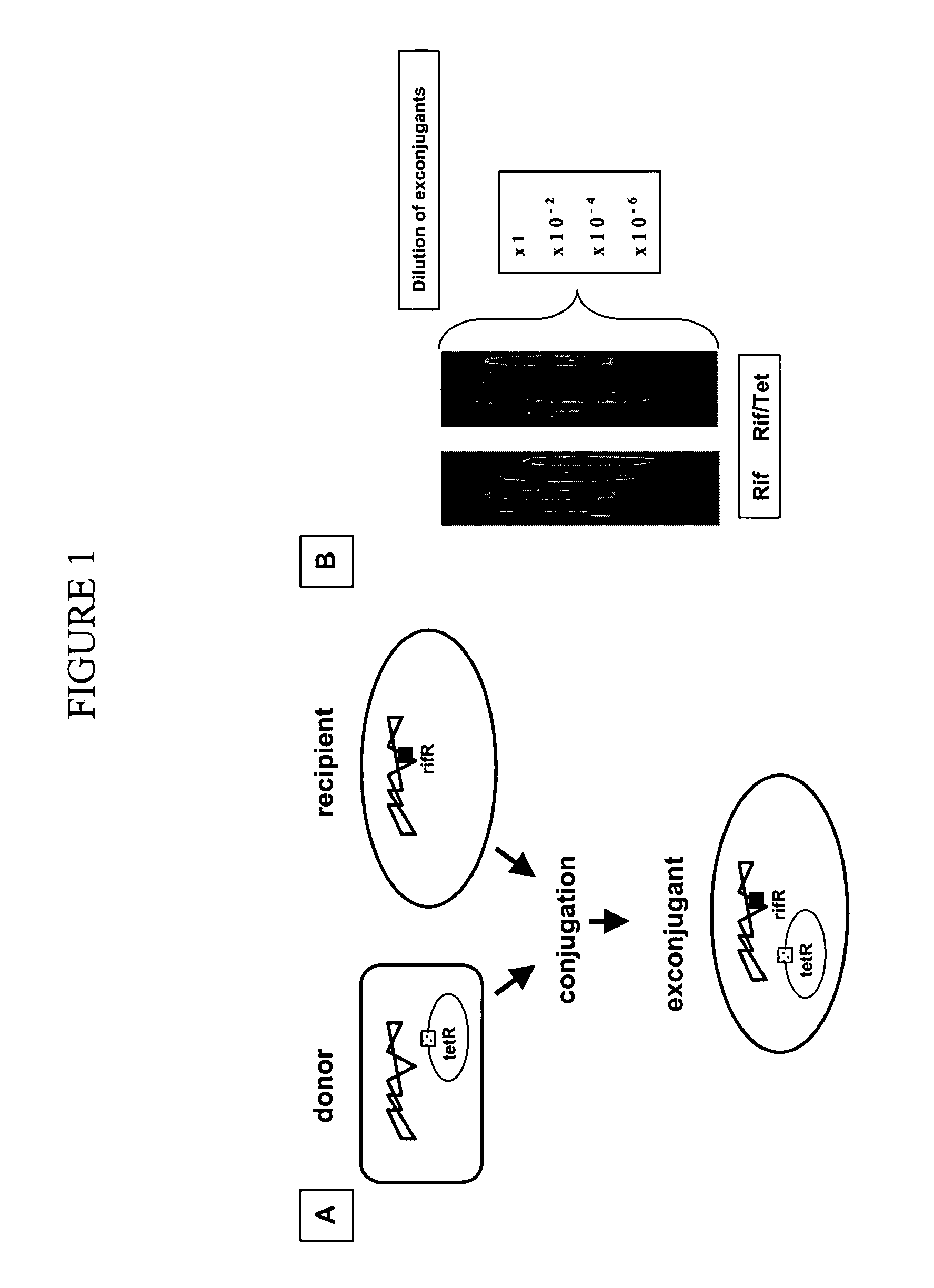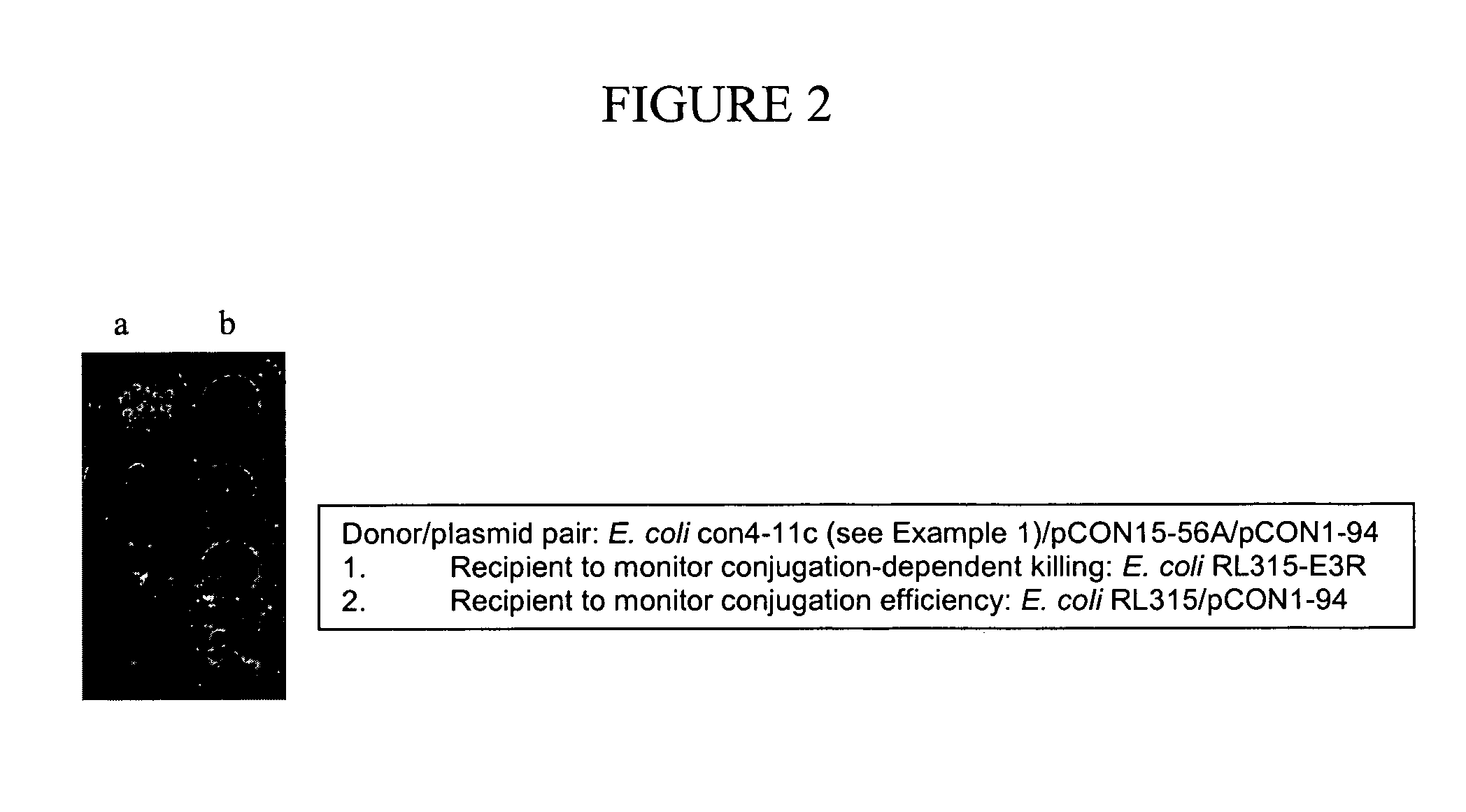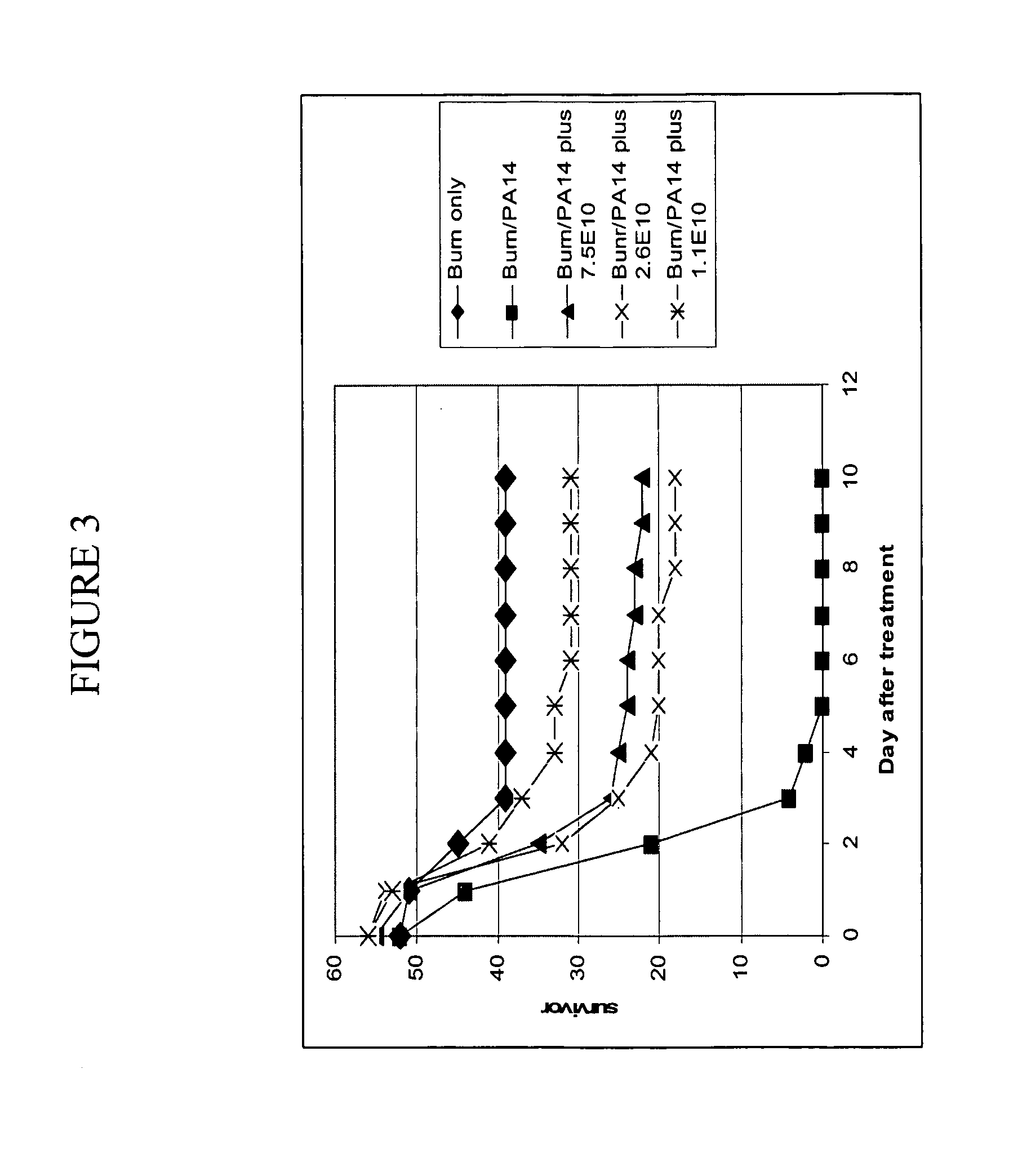Compositions and methods for treating tissue
- Summary
- Abstract
- Description
- Claims
- Application Information
AI Technical Summary
Benefits of technology
Problems solved by technology
Method used
Image
Examples
example 1
Donor Used for in vitro and in vivo Testing
[0141] Through conjugation, a plasmid can be mobilized in either self-transmissible or non self-transmissible manner. To initiate conjugal transfer products, the tra genes and oriT (origin of transfer) DNA sequence are required. The tra gene products recognize the oriT sequence and initiate nicking one strand within the sequence, and mobilize this single-stranded plasmid DNA into a recipient cell. When all the essential tra genes and the oriT sequence are located on a single plasmid, this plasmid is called self-transmissible since the recipient bacterium of this plasmid becomes a proficient conjugation donor. In contrast, non self-transmissible plasmid carries the oriT sequence, and does not have the entire set of the tra genes. This plasmid can mobilize into a recipient cell only when the tra gene products are supplied in trans in the same donor cell, either from the genes encoded on the chromosome or on the other plasmid. A derivative of...
example 2
Construction of Non Self-Transmissible Killer Plasmids
[0145] RK2 is a broad-host range plasmid, and able to replicate in almost all Gram-negative bacteria. However, its conjugation efficiency varies depending on different recipient strains, and Pseudomonas aeruginosa is one of these relatively poor conjugation recipients. In contrast, plasmids of the IncQ group (e.g. RSF1010) are mobilizable plasmids, and utilize the tra gene products supplied by RK2 (see, e.g., Lessl et al., J Bacteriol 174, 2493-2500 (1992); Tietze, Microbiol Mol Biol Rev 65, 481-496 (2001)). The conjugation efficiencies of RSF1010 and RK2 were compared using P. aeruginosa as a recipient. The results showed that RSF1010 conjugated approximately 100 times better than RK2 with this bacterium. Accordingly, RSF1010 was used as a backbone for construction of killer plasmids. An example of one such plasmid generated is pCON15-56A (see, e.g., FIG. 5).
[0146] In order to generate pCON15-56A, the PstI-NotI fragment of RSF...
example 3
Monitoring Conjugation
[0149] A regular filter conjugation was used to monitor the efficiency of conjugation. This method is well established in the art (Merryweather et al., J Bacteriol 167, 12-17 (1986). The process is depicted in the FIG. 1. After counting the colonies on both plates, efficiency of conjugation was calculated using the equation: Number of colonies on Rif / Tet per unit volumeNumber of colonies on Rif per unit volume⨯100=Conjugation efficiency(%)
[0150] Briefly, donor and target cells were grown overnight in Luria Bertani (LB) medium containing appropriate antibiotics, with the same amount of donor and recipient / target cells used for filter conjugation. After conjugation, cells were serially diluted, and spotted on LB-antibiotic plates for measuring colony forming units (cfu). Exconjugants were selected by two selective markers (RifR TetR), which prevents growth of donor and target bacteria in the mixed cell suspension. LB...
PUM
| Property | Measurement | Unit |
|---|---|---|
| Composition | aaaaa | aaaaa |
Abstract
Description
Claims
Application Information
 Login to View More
Login to View More - R&D
- Intellectual Property
- Life Sciences
- Materials
- Tech Scout
- Unparalleled Data Quality
- Higher Quality Content
- 60% Fewer Hallucinations
Browse by: Latest US Patents, China's latest patents, Technical Efficacy Thesaurus, Application Domain, Technology Topic, Popular Technical Reports.
© 2025 PatSnap. All rights reserved.Legal|Privacy policy|Modern Slavery Act Transparency Statement|Sitemap|About US| Contact US: help@patsnap.com



